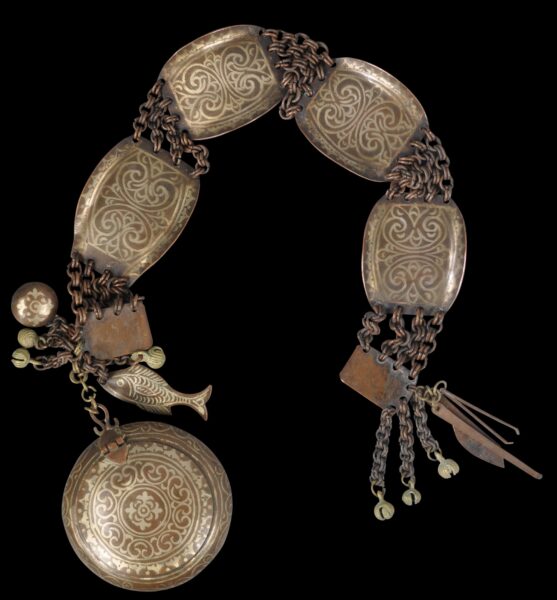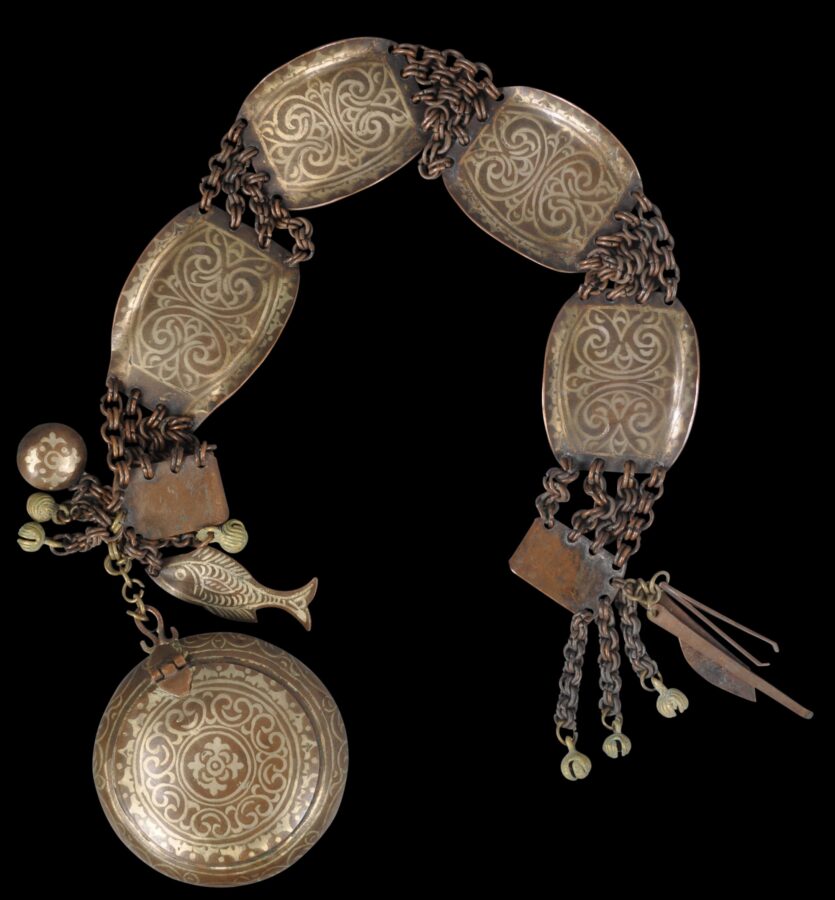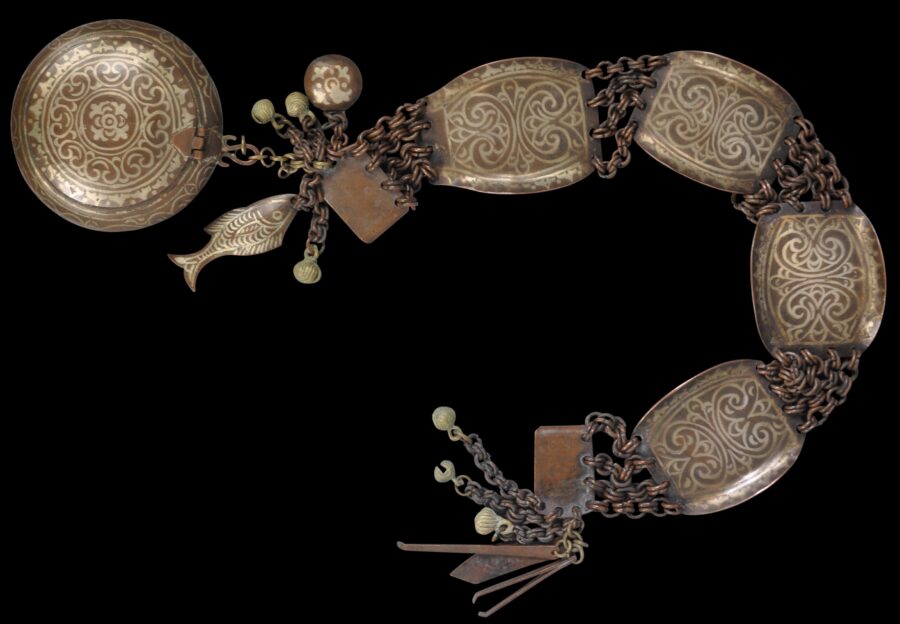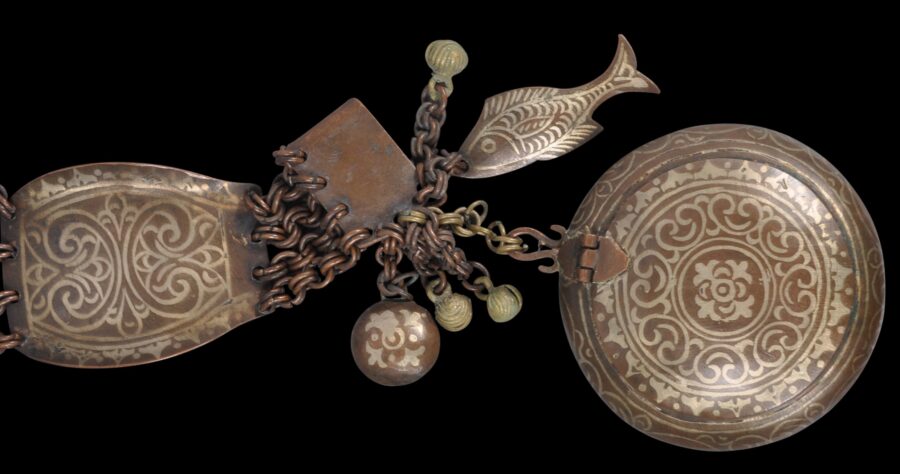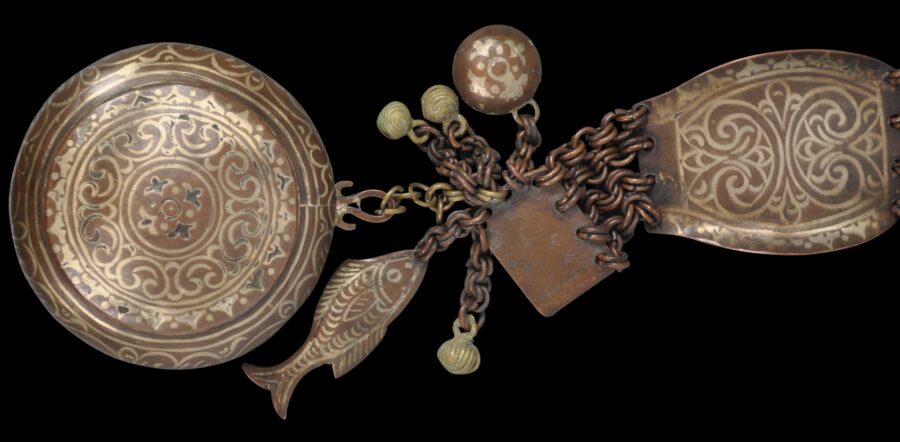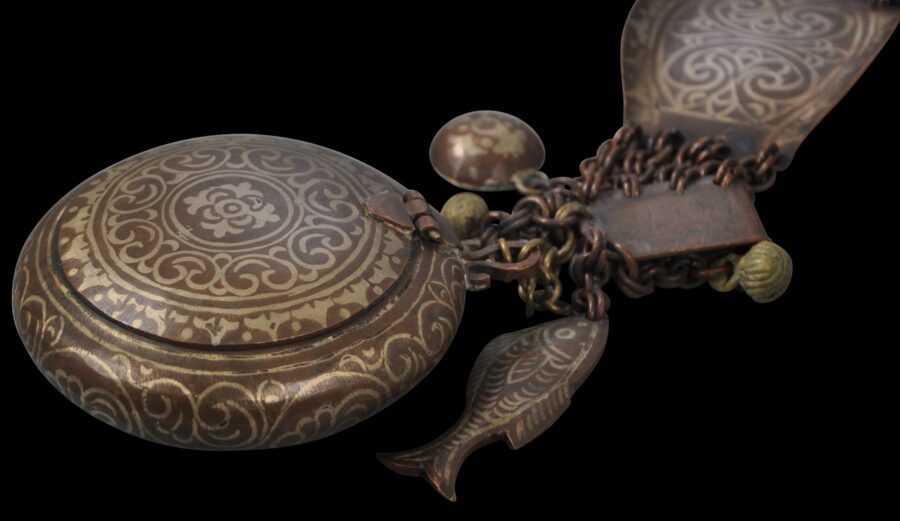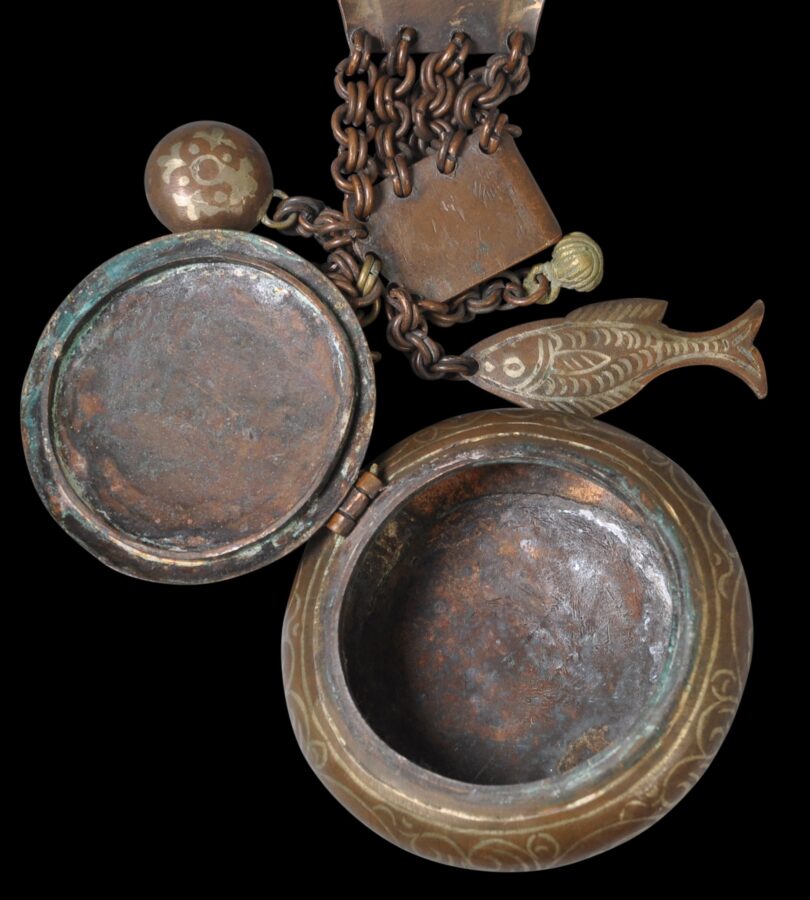This rare example of a round betel box (the Peninsular Malays called such a box a celapa), which also might have held chewing tobacco, and accompanying chain and attachments, is of brass inlaid with silver. It is the only such example we have seen. The chain has a clip on the reverse at each end which allowed it to be attached to the waist sash of a Moro groom as part of his wedding costume. It would have hung across the front of the waist, horizontally, with the round betel box hanging down at one end.
The inlay decoration is typical of the Islamic Maranao and more broadly, Moro people, of Mindanao island of the southern Philippines, a group that is closely related to the Malay people. The motifs used for the silver inlay are highly stylised. This type of decoration has its origins in woodcarving (Fraser-Lu, 1989, p. 110).
The set includes a chain of convex silver-inlaid brass panels and decorative attachments including a fish, bells and grooming implements. The lid of the round box has no way of being kept closed and so it seems likely that the set was more for symbolic purposes associated with a wedding, though the interior does seem to have traces of powdered white lime, which was used as part of the betel quid. Indeed, betel or sirih was often association with wedding rites among the Moros and the Malays and the presence of a fish element is also suggestive of a desire for prosperity and fertility.
The work on this set is similar to that on the large gadur vessels that the Moros also used in their wedding rites. See an example here. Such vessels were used as stores of wealth and were given as gifts among the wealthy families. According to Casal et al (1981, p. 155), ‘When entering the house of a datu [local chief] in Lanao and Cotabato, one’s first impression is of dozens or hundreds of brass and copper artifacts…Such objects are considered indicators of wealth and status, and they are always included among the gifts exchanged during weddings.’
The set here is rare and in fine condition.
References
Afable, P., et al, Philippines: an Archipelago of Exchange,ACTES SUD/ Musee du Quai Branly, 2013.
Backman, M., Malay Silver and Gold: Courtly Splendour from Indonesia, Malaysia, Singapore, Brunei and Thailand, River Books, 2024.
Barados, D., Land of the Morning: Treasures of the Philippines, San Francisco Craft & Folk Museum, 1995.
Casal, G. et al, The People and Art of the Philippines, UCLA Museum of Cultural History, 1981.
Fraser-Lu, S., Silverware of South-East Asia, Oxford University Press, 1989.


